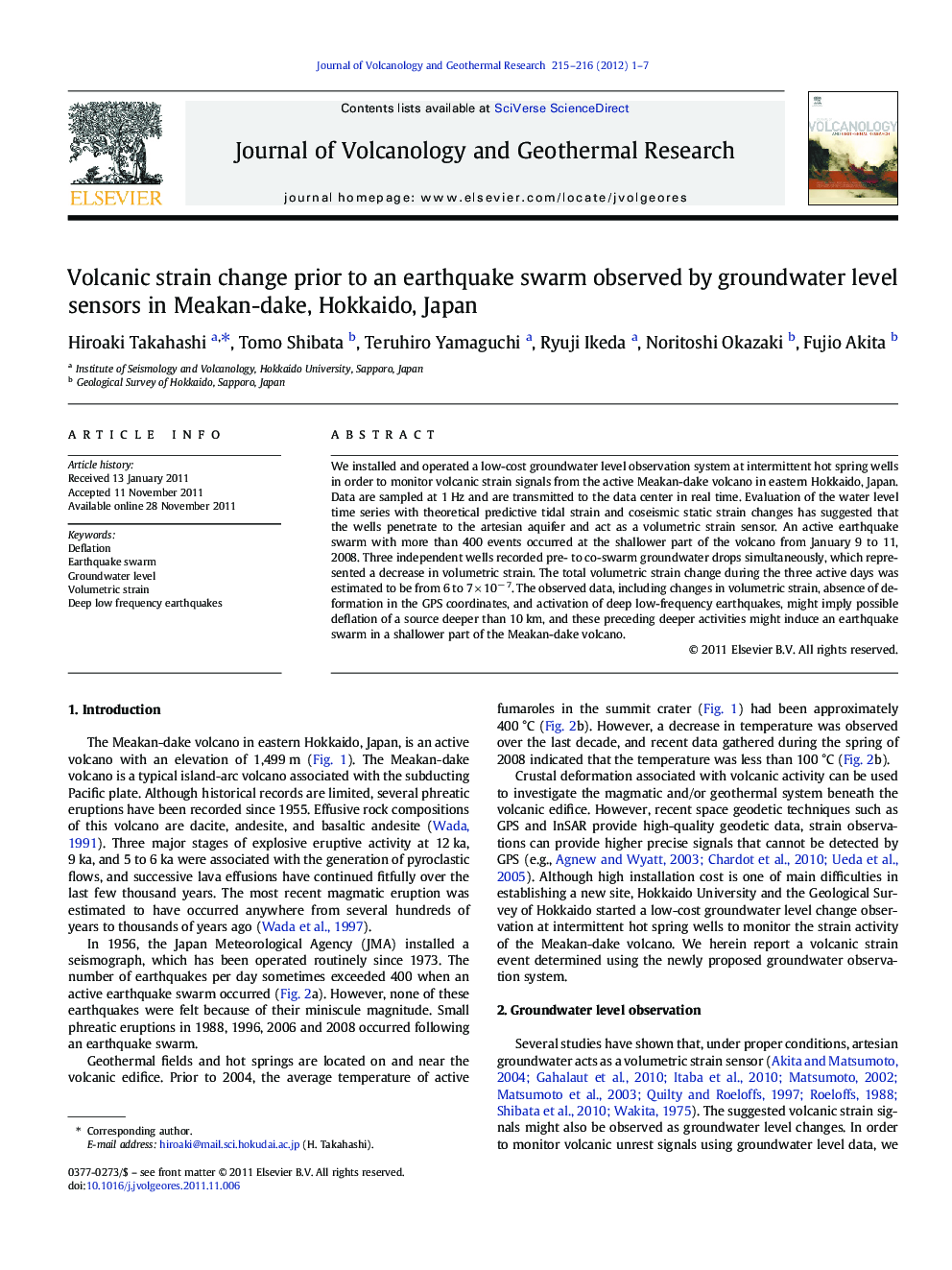| Article ID | Journal | Published Year | Pages | File Type |
|---|---|---|---|---|
| 4713832 | Journal of Volcanology and Geothermal Research | 2012 | 7 Pages |
We installed and operated a low-cost groundwater level observation system at intermittent hot spring wells in order to monitor volcanic strain signals from the active Meakan-dake volcano in eastern Hokkaido, Japan. Data are sampled at 1 Hz and are transmitted to the data center in real time. Evaluation of the water level time series with theoretical predictive tidal strain and coseismic static strain changes has suggested that the wells penetrate to the artesian aquifer and act as a volumetric strain sensor. An active earthquake swarm with more than 400 events occurred at the shallower part of the volcano from January 9 to 11, 2008. Three independent wells recorded pre- to co-swarm groundwater drops simultaneously, which represented a decrease in volumetric strain. The total volumetric strain change during the three active days was estimated to be from 6 to 7 × 10− 7. The observed data, including changes in volumetric strain, absence of deformation in the GPS coordinates, and activation of deep low-frequency earthquakes, might imply possible deflation of a source deeper than 10 km, and these preceding deeper activities might induce an earthquake swarm in a shallower part of the Meakan-dake volcano.
► Strain monitoring by groundwater level has been operated near an active volcano. ► Precursory strain signal was observed prior to a strong earthquake swarm. ► Simultaneous signals at independent wells indicated information reliability. ► Possible deeper source deflation was suggested by strain, GPS and seismicity data. ► Volatile injection into shallow aquifer might trigger shallow earthquakes.
